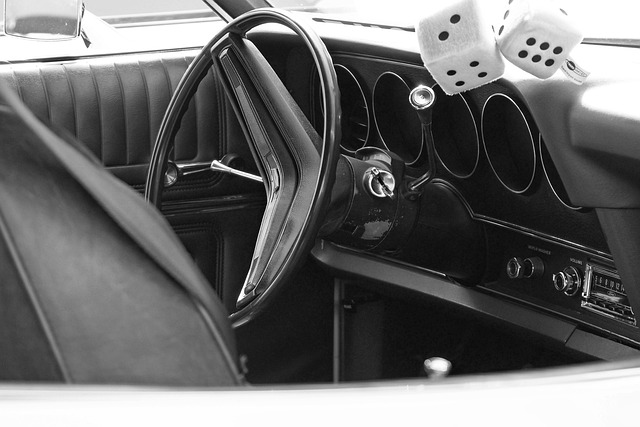“Learn how to seamlessly navigate the process of registering your car in California with our comprehensive guide. Understanding the state’s requirements is key, so we start by breaking down essential steps like gathering vital documents and verifying your Vehicle Identification Number (VIN) using a reliable VIN verifier.
Next, we’ll walk you through completing the registration online or in-person, ensuring a smooth experience. Discover the fees involved and how to receive your license plate, leaving no room for error. Registering your vehicle has never been easier!”
- Understand California Car Registration Requirements
- Gather Necessary Documents for Car Registration
- Verify Vehicle Identification Number (VIN) Accuracy
- Complete Online or In-Person Registration Process
- Pay Car Registration Fees and Receive License Plate
Understand California Car Registration Requirements

Before diving into the registration process, it’s crucial to understand California’s car registration requirements. Every vehicle owned in California must be properly registered with the Department of Motor Vehicles (DMV). This involves verifying key information about your car, including its Vehicle Identification Number (VIN), which serves as a unique fingerprint for each vehicle. Using a VIN verifier, whether it’s through a mobile vin verification service or during a traditional vin inspection at a DMV office, is a critical step in ensuring your car’s registration accuracy and compliance with state laws.
California’s DMV requires that all vehicles meet specific safety standards and are insured before registration. Additionally, owners must provide proof of identity and residency to complete the registration process. A mobile vin verifier can streamline this by providing instant data on a vehicle’s history, including any previous accidents or outstanding issues, enabling you to address them promptly and ensuring a smoother registration experience.
Gather Necessary Documents for Car Registration

Before heading to the California Department of Motor Vehicles (DMV) or any authorized agent, ensure you have all the required documents for car registration. The process begins with verifying your vehicle’s unique identifier—the Vehicle Identification Number (VIN). A reliable vin verifier like a mobile VIN inspection app can help retrieve detailed vehicle history information and confirm its authenticity. This step is crucial as it ensures that the car you’re registering is safe and legal.
Among other documents, you’ll need a valid driver’s license or state-issued ID, proof of insurance, and payment for registration fees. For vehicles over 15 years old, a safety inspection certificate might be required. If you’re transferring ownership, don’t forget to include the previous owner’s signed title transfer form. Having these documents ready ensures a smoother car registration process in California.
Verify Vehicle Identification Number (VIN) Accuracy

Before registering your car in California, it’s crucial to ensure the Vehicle Identification Number (VIN) is accurate and valid. This unique 17-character code is a vital component of your vehicle’s history and identification. One effective way to verify the VIN is by utilizing a reliable vin verifier, which can cross-reference the provided number with extensive databases to confirm its authenticity.
A mobile vin inspection or verification service can be particularly handy as it allows you to check the VIN accuracy conveniently before proceeding with the registration process. This step ensures that you’re providing correct information, preventing potential delays or issues during car registration in California.
Complete Online or In-Person Registration Process

Registering a car in California involves either completing the process online or in-person at a DMV office. Both methods are designed to be straightforward and efficient, ensuring that vehicle owners can quickly get their cars registered and hit the road legally. If you choose to go online, the California Department of Motor Vehicles (DMV) offers a convenient digital platform where you can input your vehicle’s information, including its unique Vehicle Identification Number (VIN). This VIN verifier is crucial for accurately identifying your car during the registration process.
Alternatively, visiting a DMV office allows you to conduct a mobile VIN inspection or verification in-person, ensuring all documents and details are checked thoroughly. Whichever method you select, ensure that you have all necessary paperwork, including proof of ownership, insurance, and identification. This streamlines the registration experience, making it accessible for both digital natives and those who prefer a more traditional approach.
Pay Car Registration Fees and Receive License Plate

After ensuring your vehicle meets all necessary requirements for registration, the next step is to pay the associated fees. In California, these costs can vary depending on factors like the type and age of your car. You can typically complete this process online or at a local DMV office. Once the payment is confirmed, you’ll be issued a unique Vehicle Identification Number (VIN) verifier or license plate. This official document serves as proof of registration and must be displayed on your vehicle at all times.
A mobile VIN verifier can be particularly useful in this step as it allows for remote verification of your vehicle’s details before final registration. This innovative tool, available through various apps or services, checks the VIN against state records, ensuring accuracy and saving you a trip to the DMV.
Registering a car in California is a straightforward process, whether done online or in person. By ensuring your vehicle meets all requirements, gathering the necessary documents, and accurately verifying your Vehicle Identification Number (VIN) using a trusted VIN verifier, you’re well on your way to securing your vehicle’s registration. Remember to pay the required fees and pick up your license plates for legal and safe operation on California roads.
